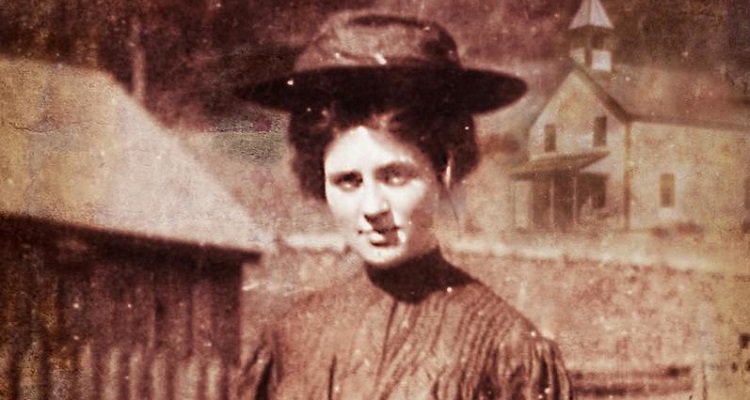Q: How has Christy shaped Christian fiction and the Christian publishing industry as a whole?
Christy was a trailblazer. When it was released in 1967, there really wasn’t much of a “Christian fiction” genre.
The book’s acclaim and success was an inspiration to a new wave of authors who went on to become the foundation of Christian fiction. When this category of writing achieved enough momentum to require its own set of awards in 1999, it was only fitting to name The Christy Awards after Catherine Marshall’s pioneer novel that set the bar so high.
Many of the greatest Christian fiction stories throughout the years also take a page from the character of Christy Huddleston herself. One of the reasons she is so relatable is that she struggles, falters and doubts. For most of us, our first true exposure to the darkness and brokenness of the world rocks our worldview, and Christy is no different.
Catherine Marshall wanted to emphasize that it’s OK — even appropriate — to be filled with questions in the face of tragedy and evil.
Christy has good intentions, but she’s definitely not a super-Christian. It’s the influence of this character, one whose relatability transcends generation or geography, that continues to help shape the genre.
RELATED LINKS
Q: What would Catherine Marshall think of the book being so popular that it became a beloved TV series?
Because Christy was on the New York Times best-sellers list for 38 weeks, there was a heated bidding war for the movie rights. MGM purchased the movie rights to Christy shortly after it became a blockbuster success. In 1969, the movie was in pre-production. A well-known director and award-winning scriptwriter were engaged by the studio.
The script was written, and just like she did with the popular movie, A Man Called Peter, Catherine consulted with the studio. Then MGM was sold, and every picture in production was canceled.
As you can imagine, it was a deep disappointment to Catherine. The Christy film rights, which had been sold to MGM, were locked up for decades and held hostage by the studio that had no plans to do anything with the rights or the script now relegated to the basement files. This story, perfect for dramatization, was owned by a studio with no desire to bring it to life.
The CBS TV series resurrected the dream of Christy on-screen again — this time on television. Although Catherine was not alive to enjoy those episodes, her family was thrilled with Kellie Martin’s portrayal of Christy.
We believe Catherine would have agreed and been delighted to see the character of Christy come alive visually and dramatically. Many of the episodes were drawn directly from the novel. A number of the endearing school children in the series were local to the area, and some had never acted before. The portrayal of Christy, Dr. MacNeill and Miss Alice by experienced actors who were ideal for their parts brought the novel’s characters to life.
Catherine would have appreciated the authenticity brought to the series by the producers. She was a stickler for historic research both in Christy and her next novel, Julie. She believed the historic detail and the use of it in her vivid descriptions, plotting and characterizations transported the reader back in time to the community and brought them alongside Christy in “real time” as she was experiencing the Cove.
The authenticity of the location in which the series was filmed, the depiction of the Mission buildings, the detail in recreating this Scottish highlander mountain community and the care of the writers and the producers to bring the novel to life made the series a success.
Now, what about Christy’s dramatic big screen or television future? There is nothing in the works right now. It was always Catherine’s hope that one day Christy would be a film musical. We can dream.
Christy (1994) television opening credits
Q: What lessons can those who are about to make a life change and enter an unfamiliar world glean from the story of Christy?
In a word, courage. It took a lot of courage for Christy Huddleston to leave everything familiar and comfortable and enter a world different from anything she had experienced before. Her life in the Appalachian Tennessee mountains was a stark contrast to the life she had lived in the city of Asheville, North Carolina.
It required courage for her to face opposition and evil. It required courage for her to face her own shortcomings and doubts without running away. She continued to try new methods and ideas.
Perseverance is another lesson. Christy learned that change of social injustice and community values is slow and often painful. Changing a community and its way of doing things is usually the result of impacting one life at a time. Learning how to persevere in the midst of discouragement and setbacks is another life lesson demonstrated in Christy’s encounters with the fiercely determined Scottish highlanders in the mountains of Tennessee.
Unexpected joy — it is often when we risk the familiar, launch out into the uncertain future and leave behind what is comfortable and familiar that we encounter unexpected joy. Christy had no idea when she first arrived in the Cove that she would experience unfettered joy with these ragamuffin children, encounter the depths of shared friendship and insights with an unusual mentor or be taught about true beauty and joy in the simplest of things by a mountain woman.
She came as the teacher. She came to serve. She came to make a difference. As so often happens when we take these kinds of risks, she found herself the recipient of so much more.
Learn more about the 50th anniversary of Christy plus download a free map of Cutter Gap by visiting ChristyBook.com.


